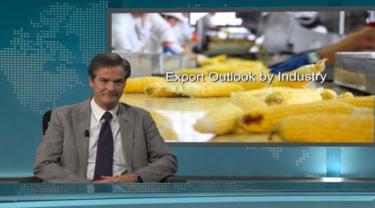If exporters have a lot of worries these days, prices are not on the list. Prices – or inflation – together with the unemployment rate, are the elements of the ‘misery index’, the brainchild of economist Arthur Okun. Inflation’s recent track record – and we are talking years – should have us jumping for joy. Why are prices so tame, and will they stay that way for long?
Their track record is surprising. Many predicted that by now, inflation should be a problem in the world economy. Those expectations have been repeatedly wrong. Consumer prices in the vast bulk of the developed world have averaged annual growth of 1.7 per cent in the 2010-2016 period.
Why were the pundits so wrong?
Pessimists thought they had their moment when prices began a multi-month upswing in 2016. However, that too came to a swift end, and against fears of worse to come, prices sunk back to growth rates well within central bank target levels.
The misery-hounds have given a lot of reasons for an imminent run-up of prices. Gloom-and-doomers have long since expected that quantitative easing – or as they put it, printing of endless amounts of money – in the post-recession period would inevitably lead to runaway inflation.
Years on, the Fed’s QE program is now in retreat, without a hint of the price nasties that were foreseen. And while Europe’s program is dialing down more slowly, Continental worry-warts have little to show for their post-recession grey hairs. Prices across the Euro-area have been remarkably well-behaved. While full victory is still a number of months away, so far it seems that QE has deftly avoided the fallout that pundits feared the most.
Commodity prices
Commodity prices were another inflation bugbear. Sky-high pre-recession prices fed fears that we were running out of everything from oil and gas to basic metals, and other raw goods. Even after the Great Recession, commodity prices zoomed back to previous peaks on those same tight-supply fears. All that did was to attract investment – boatloads of it – into the commodity space, producing a supply glut that will be ample for years to come. This group of prices is going nowhere fast for a long time.
Canada might have expected to see higher prices as a result of currency swings. The commodity price tumble in 2015 felled our dollar, increasing the prices of imports. But fears of the pass-through of import prices have not materialized; in spite of this, all is still well.
Will we see inflation growth in 2018?
There are more pressing and imminent inflation concerns, though. For years, business in multiple countries has lamented a lack of skilled workers. This is in good part related to the ageing of the population, and is now being exacerbated by a tightening supply of workers in general.
The official US unemployment rate, at 4.1 per cent, is about as low as it ever gets. Canada’s, approaching the 5 per cent level, is in similar relative territory. Western Europe is likewise zooming in on its cyclical lows. Although there are few signs of wage inflation, there are lots of fears that it’s not far off.
At the same time, industrial capacity is tightening. The recent runup in orders has fed expectations of more growth to come, putting pressure on already-skinny spare capacity. On these two key fronts, are we staring out the first big price runup in over a generation?
It’s possible – but given the current labour and industrial capacity statistics, that should already be obvious. The real question is, why are they still so tame? The simple answer is that there must still be capacity to grow, stats notwithstanding. A second look at those stats is revealing. Unemployment rates in the developed world are artificially low; they don’t account for the discouraged post-recession labour force dropouts that are still available to work. It’s a similar story on industrial capacity: facing weak growth, firms under-invested, and added to already vast cash-stashes.
At long last, it’s time to invest again in production facilities – and guess what? There’s plenty of money to do it with. Sure, there may be price pops as things get going, but the constraints will be temporary and manageable.
The bottom line?
Central banks have signaled a new concern for imminent inflationary pressures, and are notching up ultra-low interest rates. That’s overdue – but prices are showing us that the economy still has a lot of runway.





